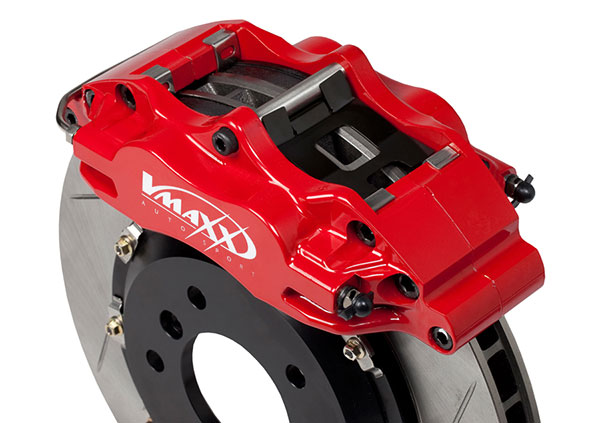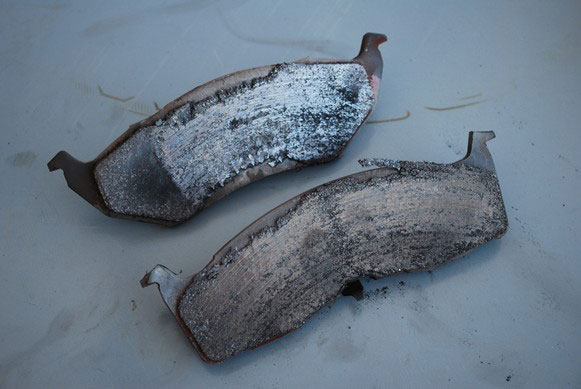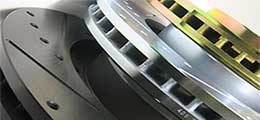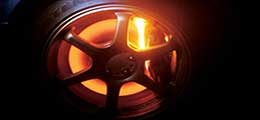
*Source v-maxx.com
A big brake kit is an oversized caliper that is used to house an oversized brake pad. The said purpose of these kits is to increase the surface area of the brake pad hitting the brake rotor for improved braking function.
Many people upgrade their brake calipers because they think bigger brakes calipers and pads mean more braking power. Most of this thinking is perpetuated by the belief that big brakes utilize more brake pad material and therefore cause more braking friction or grip. Additionally, people notice most performance autos having them installed, and want to replicate this. It is hard for these people to believe that the big brake kits used on racing vehicles won’t increase stopping power on their own street vehicles as well.
What a big brake kit will do for a braking system is decrease the operating temperature of all related braking system components. As you may already know, heat is a brake systems’ worst enemy, and can render them ineffective after a certain point. Race cars use these big brake kits to reduce the temperature of brake calipers, pads, and fluid during heavy episodes of braking. A larger mass of brake pad allows the braking system to absorb more heat overall as there is a greater amount of material to do so. As the brake pad itself is able to take on more heat energy, the braking system stays cooler longer.
A big brake kit will not increase the stopping power of a vehicle or decrease its stopping distance due to the physics involved. A larger brake pad will only spread out the clamping force of the brake caliper over a greater area. The brake pad will always retain the same amount of friction between pad and rotor regardless of any increase in brake pad surface area. This is because the coefficient of friction law does not rely on the surface area of the materials involved; only with the type of materials involved.
If you do happen to heat up a brake pad to its critical point, whether it is a stock or bigger than stock brake pad, parts of the pad will actually liquefy or melt and cause what is called glazing. This melted brake pad material will actually crystalize when reforming, and create a “glaze” on the brake pad and rotor. This glazing will severely hamper the performance of a braking system, and will cause symptoms such as vibration or braking jitter, and or cracks or fissures in the brake rotors themselves.
By utilizing more brake pad material, you can increase the heat capacity of the brake pads and raise the bar for this glazing effect to happen.

If you do happen to glaze your brake rotors, you can attempt to resurface them with a brake lathe. Resurfacing is only possible when there is sufficient brake rotor material left to remove.
If you resurface or turn your brake rotors when they are at or below their recommended minimum thickness level set by the manufacturer, you will be making a mistake.
Brakes rotor thickness measurements are set strictly by the manufacturer because brake calipers are only able to apply adequate clamping forces at set distances effectively.
* Source www.modernperformance.com
Big brakes may look cool, and might impress your friends, but are not necessary for stock vehicles in most cases. Big brake kits are only useful in high frequency braking applications such as racing.








kyriakos
posted on Jan 27, 2012 9:59:20 AMWHAT DO YOU HAVE ???